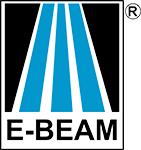Why do companies choose electron beam irradiation to sterilize their products?
Electron beam radiation has been used for more than half a century to sterilize medical devices due to several key benefits, including: low cost, high reliability, turnaround time, safety, and relative ease of validation.
How do I know my part has been effectively crosslinked?
When most of our customers come to us, they have a specific property improvement in mind. Clients with a formed part may desire improved high temperature properties or improved tensile strength, while clients looking to improve the properties of polymers in pellet form may desire a specific melt index or melt strength.
Important Parameters of an Electron Beam – Understanding energy (MeV), current (mA) and line speed — and why they matter.
The key parameters to control an electron beam accelerator are the energy, current and line speed of the process. The accelerators used by E-BEAM Services are similar to the old cathode ray tube (CRT) televisions. However, instead of operating at about 25,000 volts, our industrial electron beams can operate at up to 5,000,000 volts. The […]
Can e-beam really penetrate my product – I mean, isn’t it just a surface treatment?
I have been asked, or even been told, that e-beam is “only a surface treatment and can’t get through any more than a piece of paper.” Wrong. For decades, e-beam has been used to sterilize whole cases of medical devices, such as those in the picture below. Thousands of truckloads are contract-sterilized by e-beam each […]
What size of parts can I have e-beam crosslinked?
The first thing to consider is that the parts are transported through the e-beam on a conveyor system using carts with the beam shooting down and through the parts. These carts vary in size. In New Jersey the carts measure 60 x 48 inches and in Ohio they measure 98 x 52 inches. In addition
What does “pounds per square foot” mean to me when evaluating e-beam dose penetration?
You may hear the limitation of “up to 8 pounds per square foot” regarding the penetrating capability of a 4.5 MeV accelerator. What does that mean? Start with the image of your box of medical devices on a conveyor going through a shower of electrons raining down on it.
Will electron beam crosslinking improve the thermal resistance of my polyethylene molded part?
Polyethylene is the most commonly electron beam-crosslinked polymer. Regardless whether it is LDPE, LLDPE or HDPE, it will crosslink with sufficient dose. The effect of the crosslinking will be a dramatic increase in heat resistance, as well as an improved impact resistance at low temperatures and a number of other property enhancements.
